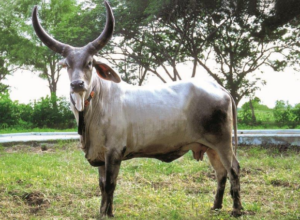The Rashtriya Gokul Mission is a focussed project under National Programme for Bovine Breeding and Dairy Development, with an outlay of Rs 500 crore during the 12th Five Year Plan. The “Rashtriya Gokul Mission” aims to conserve and develop indigenous breeds in a focused and scientific manner.

Cattle rearing has been a traditional livelihood in India and is closely linked to agricultural economy. India with 199 million cattle has 14.5% of the world cattle population. Of this, 83% i.e. 166 million are indigenous. Most of the indigenous cattle (about 80%) are non- descript and only 20% belong to breeds recognised by National Bureau of Genetic Resources.
Objectives of Rashtriya Gokul Mission
The objective of the scheme is to:
- Development and conservation of indigenous breeds.
- Undertake breed improvement programme for indigenous cattle breeds so as to improve the genetic makeup and increase the stock.
- Enhance milk production and productivity.
- Upgrade nondescript cattle using elite indigenous breeds like Gir, Sahiwal, Rathi, Deoni, Tharparkar, Red Sindhi.
- Distribute disease free high genetic merit bulls for natural service.
Implementing Agency
The Rashtriya Gokul Mission is implemented through the “State Implementing Agency (SIA viz Livestock Development Boards). State Gauseva Ayogs are given the mandate to sponsor proposals to the SIA’s (LDB’s) and monitor implementation of the sponsored proposal. All Agencies having a role in indigenous cattle development are “Participating Agencies” like CFSPTI, CCBFs, ICAR, Universities, Colleges, NGO’s, Cooperative Societies and Gaushalas with best germplasm. Department of Animal Husbandry, Dairying & Fisheries has been implementing Rashtriya Gokul Mission.
Distribution of Funds
The Funds under the scheme are allocated for
- Establishment of Integrated Indigenous Cattle Centres viz “Gokul Gram”.
- Strengthening of bull mother farms to conserve high genetic merit Indigenous Breeds;.
- Establishment of Field Performance Recording (FPR) in the breeding tract.
- Assistance to Institutions/Institutes which are repositories of best germplasm.
- Implementation of Pedigree Selection Programme for the Indigenous Breeds with large population.
- Establishment of Breeder’s Societies: Gopalan Sangh.
- Distribution of disease free high genetic merit bulls for natural service
- Incentive to farmers maintaining elite animals of indigenous breeds
- Heifer rearing programme; award to Farmers (“Gopal Ratna” ) and Breeders’ Societies (“Kamadhenu” ).
- Organization of Milk Yield Competitions for indigenous breeds.
- Organization of Training Programme for technical and non-technical personnel working at the Institute/Institutions engaged in indigenous cattle development.
Gokul Gram
It is proposed to establish Integrated Indigenous Cattle Centres or Gokul Grams in the breeding tracts of indigenous breeds. Gokul Grams will be established in:
- The native breeding tracts.
- Near metropolitan cities for housing the urban cattle.
Gokul Gram will act as Centres for development of Indigenous Breeds and a dependable source for supply of high genetic breeding stock to the farmers in the breeding tract.
The Gokul Gram will be self-sustaining and will generate economic resources from sale of A2 milk, organic manure, vermi-composting, urine distillates, and production of electricity from bio gas for in house consumption and sale of animal products. The Gokul Gram will also function as state of the art in situ training centre for Farmers, Breeders and MAITRI’s.
Each Gokul Gram will be set up by the EIA and function under the auspices of the SIA/ EIA or in a PPP mode. The Gokul Gram will maintain milch and unproductive animals in the ratio of 60:40 and will have the capacity to maintain about 1000 animals.
Achievements under Rashtriya Gokul Mission
- 14 Gokul Grams are being established and 41 Bull Mother Farms modernized.
- 3629 Bulls have been inducted for natural service
« Go back to RBI Grade B homepage